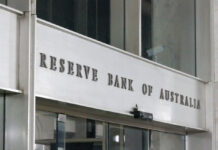Wall Street showed the first glimpses of grudging acknowledgement that the coronavirus outbreak could see global growth lower for longer overnight. Stock markets retreated, US Treasury yields edged lower on haven flows, and the US dollar consolidated its gains. That sentiment appears to be flowing into Asian markets today, although it is more a case of the sniffles, rather than a full-blown cold.
Wall Street’s retreat probably has as much to do with position lightening after an impressive rebound over the past week, then a disinfecting of the V-shaped recovery prognosis. Although the rate of new infections in China has slowed overnight, thanks in part to their new counting methodology, regional markets have been spooked by a spike in new infections in South Korea, and more cases in Japan.
That is likely to see Asia trade cautiously lower into the week’s end with the data calendar relatively light internationally today. We have a procession of PMI’s from across Europe and the US Flash PMI’s for February to come, but its relevance is limited. What will matter are the February data releases due in early March. Only then, will the world gain an accurate picture of just how much impact the China coronavirus has had on our intertwined world.
Japan may have given us a foretaste of things to come this morning though, with the release of its February Flash Manufacturing and Services PMI’s. Flash Manufacturing sank to 47.6 from 49.0 previously, and Flash Services PMI fell to 46.7 from 51.0 prior. Manufacturing declined more modestly than services, highlighting the insidious infection that the coronavirus causes. That is that consumers stop consuming and stay at home. Everyday activity, such as simply going out for dinner, or to the cinema comes to a grinding halt.
If the coronavirus emergency loiters through all Q1 and part of Q2, the steady procession of companies globally announcing material impacts on either their revenues, or supply chains, could turn into a flood. That will inevitably be good news for the US Dollar and US bonds and gold, especially if it triggers another wave of easing from Asia’s central banks. However, equities markets may well find themselves having flown too close to the sun. That savings glut I often talk about, could just as quickly retreat into cash and bonds to wait out the storm for a while.
As the data for February rolls in over early March, the saying that “sell in May and go away,” could become, “long in March, your portfolio will get parched.”
Equities
Wall Street gave back some of its recent gains overnight with coronavirus concerns cited as the cause. The pull-back though, looks more corrective than a change of sentiment for now, after an impressive run higher in recent times. The S&P 500 fell 0.38% with the e-mini futures easing in Asia. The Nasdaq fell 0.67%, and the Dow Jones fell 0.45%. Weekend risk hedging may see more profits taken off the table in New York this evening.
Asia has started the day on a negative tone after Wall Street’s fall, although again, it looks more corrective in nature as investors reduce weekend exposure. The exceptions are the South Korean Kospi and the Hang Seng, which has fallen by 1.22% and 1.35% respectively. That follows an overnight spike in coronavirus cases in South Korea, and the quarantining of over 50 Hong Kong police officers.
Elsewhere, the Nikkei 225 is flat, supported on one side by a dramatically weakening Yen over the last two days, and concerns about further coronavirus infections going forward. The Singapore Straits Times is flat as are China’s Shanghai Composite and CSI 300. The Australian All Ordinaries has eased 0.25%.
Asia looks content to finish the week on a quiet note. The moves lower in South Korea and Hong Kong, however, highlight the ever-present danger of more coronavirus bad news on the region’s markets.
Currencies
The US Dollar continued its grind higher overnight, albeit at a much-reduced pace than the frenzy of the day before. The Dollar Index futures (DXY) is within a hairsbreadth of the 100.0 level, a three-year high. With robust economic data, high developed market yields and a bond market that is the haven of choice, the Dollar strength is set to continue.
USD/JPY was a notable gainer, rising another 50 points overnight to 112.00 as the increasing number of coronavirus cases in Japan, wilts the Yen’s appeal as a haven. USD/JPY has interim resistance at 112.40, with a break thereof, opening further gains to 114.00 regions.
The antipodeans, with their high beta to China, remained anchored at the bottom of their ranges overnight following Wednesday’s sell-off. The AUD/USD is at 0.6600, an 11-year low, as forex markets remain nervous about its resource-heavy economies exposure to a material China slowdown. A weekly close under 0.6600 will imply that a medium-term move to 0.6200 is possible. NZD/USD remains at the bottom of its range at 0.6315. The picture is slightly more positive here, with a weekly double bottom at 0.6200 providing strong technical support, for now.
Having climbed to 1.4090 yesterday, the USD/SGD has retreated to 1.4000 as some calm has returned to the market. That leaves it squarely mid-range having started the week at 1.3900. The SGD has likely weathered the worst of the storm for now. Further losses, particularly through 1.4100, will require another bout of US Dollar strength and Chinese Yuan weakness.
Oil
Both Brent crude and WTI recorded modest gains overnight after a lower than expected growth in official US Crude Inventories lent support. That allowed oil to shake off the malaise from the equity market, that wiped out their earlier rallies. If Wall Street is finally getting nervous about coronavirus, though, it may be a temporary reprieve.
Brent crude was flat at $59.25 a barrel having tested the critical $60.00 a barrel level earlier in the day. WTI climbed to $54.50 a barrel during the US session before retreating, but still eked out a 0.35% gain to finish at $53.70 a barrel.
Both contracts have edged 0.10% lower in restrained Asian trading, likely awaiting more direction from North America later this evening. Both contracts are within shouting distance of significant resistance levels at $60.00 and $55.00 a barrel respectively. Although I can countenance that a break of one or either, could see stop-loss and algorithmic buying hit the market, maintaining gains above those levels will be challenging against the coronavirus backdrop. Oil’s correction higher has come a long way, and those regions could be a bridge too far.
Gold
Gold’s impressive rally continued overnight, rising 0.55% to $1623.00 an ounce, and clearing interim resistance at $1612.50 an ounce. Haven demand continues to support gold, and Asia has seen similar flows this morning, with gold climbing once again, to $1624.00 an ounce.
From a technical viewpoint, no resistance of note is visible ahead of the $1700.00 an ounce region. Even with the US Dollar strong and US Treasury yields holding up, gold remains at 7-year highs. That implies that its role as a risk-hedge remains as appealing as ever, and that many traders missed the latest move higher. As such, gold should remain in demand, and is likely to continue so, until we see the light at the end of the coronavirus tunnel.












